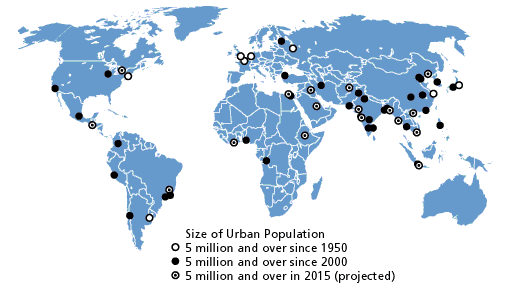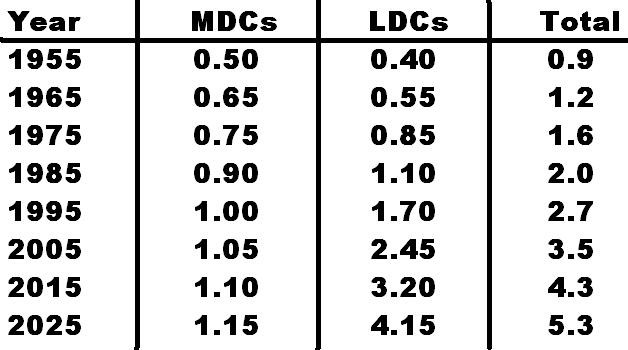|
Urbanization is defined as three different things: "The proportion of a country's population who reside in urban areas; the
movement of people from rural areas to urban settings; the physical expansion of towns and cities into rural areas."
 |
 |
|
Year
|
Approximate Pct.
|
|
1800
|
2.5
|
|
1825
|
4.0
|
|
1850
|
6.0
|
|
1875
|
9.0
|
|
1900
|
14.0
|
|
1925
|
20.0
|
|
1950
|
29.0
|
|
1975
|
40.0
|
|
2000
|
55.0
|
|
 |
 |
This is a chart of the Rising Global Urbanization
In urban countries the population density is very high, the size of the building lots are extreamly small. The types of jobs
(primary, secondary, tortiary) are high portion-non primary jobs. Their methods of transportation are public and private,
the amount of available open space is low portion of land without roads or buildings. The shopping opportunities are necessities,
and some luxury items. There are many medical opportunities, there are general practitioners, specialists and hospitals etc.
Educational opportunities are public ans post secondary schools. Other services such as laywers & accountants are available
if needed. Recreational opportunities include minor sports programs, cultural events, movies, bars, and night clubs. Municipal
taxes are higher, public services such as sbowplowing, road maintenance, street lights, side walks, fire hydrants, sewers
and water are available. The crime in urban areas are high and mostly stolen properties. The types of pollution are industrial,
water, air and noise, the only smell is air pollution.


|
| Projected Urban Populations in Billions |
|

